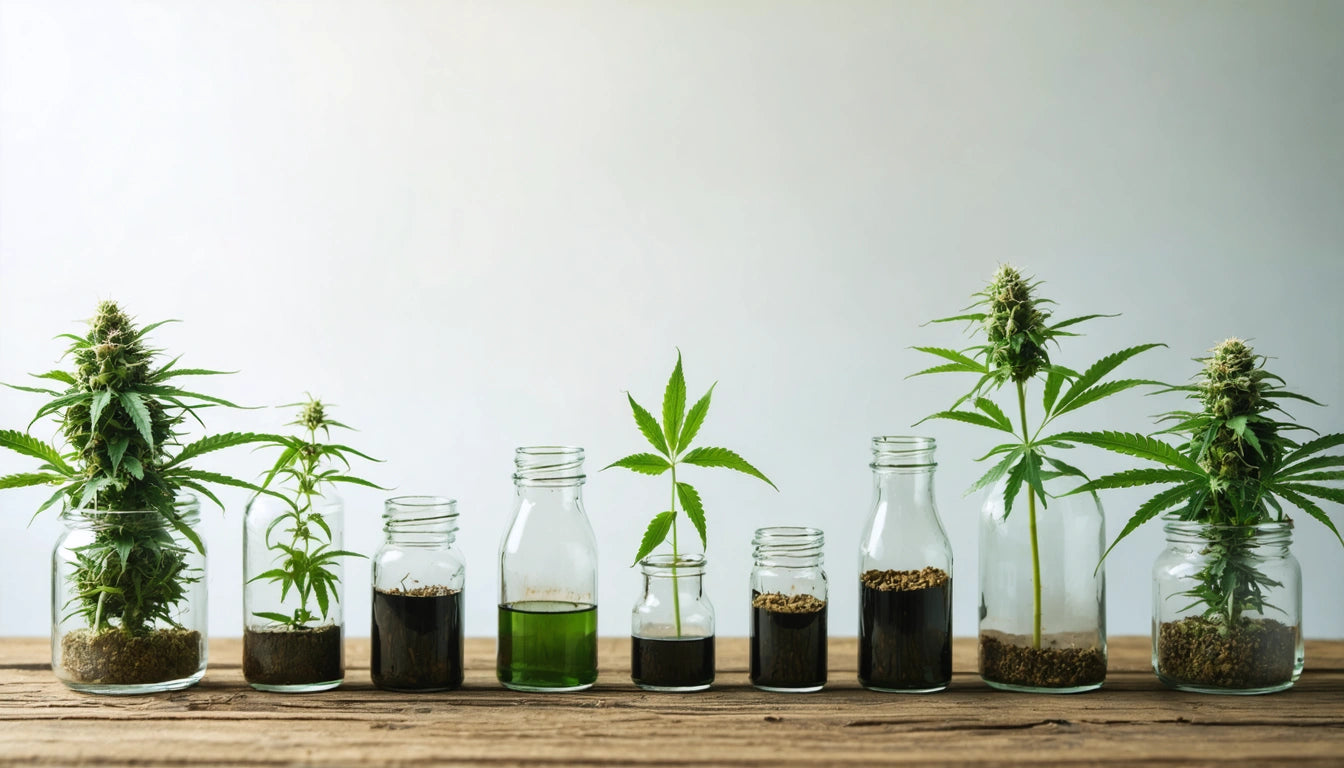Table of Contents
- What is Cannabis Distillate?
- How Distillate is Made: Commercial & DIY Methods
- How to Use Distillate: Dosage & Applications
- Distillate Comparisons: Distillate vs Oil, HTE & Other Concentrates
- Distillate Handling Tips: Working with Syringes & Storage
- Future of Distillate Production: Innovations & Trends
Everything You Need to Know About Distillate: Usage, Production, and Comparisons
Cannabis distillate represents one of the purest forms of cannabinoid extracts available on the market today. With THC concentrations often exceeding 90%, this versatile concentrate has become a cornerstone product for both recreational and medicinal users. This comprehensive guide explores how distillate is made, proper usage techniques, dosage guidelines, and how it compares to other cannabis concentrates.
What is Cannabis Distillate?
Distillate is a refined cannabis extract that has undergone multiple purification processes to isolate specific cannabinoids, most commonly THC or CBD. The result is a clear, amber-colored, viscous liquid with minimal flavor, aroma, or plant compounds beyond the target cannabinoid.
Key characteristics of cannabis distillate include:
- Potency typically ranging from 85-95% cannabinoid content
- Versatility for multiple consumption methods
- Minimal terpene content (unless reintroduced)
- Neutral flavor profile
- Long shelf-life when stored properly
How Distillate is Made: Commercial & DIY Methods
Understanding how distillate is made helps consumers appreciate the product's purity and potency. The commercial production involves sophisticated equipment and precise techniques.
Commercial Distillation Process
The creation of high-quality distillate follows several critical steps:
- Extraction: Raw cannabis material undergoes initial extraction using solvents like butane, CO2, or ethanol
- Winterization: The extract is mixed with ethanol and frozen to separate waxes and lipids
- Filtration: Unwanted plant materials are removed
- Decarboxylation: The extract is heated to convert THCA to active THC
- Distillation: Multiple rounds of short-path or wiped-film distillation isolate the desired cannabinoids
DIY Distillate Considerations
While DIY distillate production is technically possible, it comes with significant challenges:
- Requires specialized equipment including precise digital weighing scales for accurate measurements of starting materials and yields
- Presents serious safety hazards due to flammable solvents
- Demands technical knowledge of chemistry and extraction principles
- May be illegal depending on local regulations
For those interested in home production, starting with rosin pressing or simple alcohol extractions offers a safer entry point to concentrate production.
How to Use Distillate: Dosage & Applications
The versatility of distillate makes it popular across various consumption methods. Understanding how much distillate to use is crucial for a positive experience.
Determining Proper Dosage
When deciding how much distillate should I use, consider:
- Potency calculation: If a distillate is 90% THC, each gram contains 900mg of THC
- Starting dose: Beginners should start with 5-10mg THC (a tiny drop)
- Experienced users: May use 25-50mg per session
- Medical applications: Dosage varies by condition and should be physician-guided
Common Applications
As explored in this guide on distillate cartridges, there are numerous ways to use this versatile concentrate:
- Vaporization: Filled into cartridges or used in dab rigs
- Edibles: Mixed into cooking oils or butter for infusion
- Tinctures: Dissolved in carrier oils for sublingual administration
- Topicals: Incorporated into creams and balms
- Capsules: Precisely dosed in gelatin or vegetable capsules
Distillate Comparisons: Distillate vs Oil, HTE & Other Concentrates
Understanding how distillate compares to other cannabis concentrates helps consumers make informed choices.
Distillate vs Oil
In the distillate vs oil comparison:
- Purity: Distillate (85-95%) vs cannabis oil (60-80%)
- Compounds: Distillate isolates specific cannabinoids while oils retain more plant compounds
- Flavor: Oils maintain more natural cannabis flavor than distillate
- Versatility: Both are versatile, but distillate offers more precision for dosing
HTE vs Distillate
High Terpene Extract (HTE) and distillate represent opposite approaches to concentration:
- Focus: HTE preserves terpenes while distillate isolates cannabinoids
- Experience: HTE provides strain-specific effects while distillate offers consistent potency
- Applications: HTE excels in flavor-forward applications while distillate provides versatility
As detailed in this comparison of live resin vs distillate, full-spectrum extracts preserve more of the plant's natural profile than distillate.
Distillate Handling Tips: Working with Syringes & Storage
The viscous nature of distillate can make it challenging to handle. This guide on distillate syringes offers valuable insights on proper handling techniques.
Working with Distillate Syringes
- Warm the syringe slightly to improve flow (warm water bath method)
- Use slow, steady pressure when dispensing
- Clean the tip after use to prevent clogging
- Store upright to prevent leakage
Optimal Storage Practices
- Store in cool, dark place in airtight container
- Avoid exposure to heat, light, and air
- Refrigeration can extend shelf life but isn't necessary
- Silicone or glass containers work best for storage
Future of Distillate Production: Innovations & Trends
The distillate market continues to evolve with several emerging trends:
- Solventless technologies: New methods reducing or eliminating chemical solvents
- Terpene preservation: Techniques to maintain more natural compounds while achieving high potency
- Minor cannabinoid distillates: Growing interest in CBG, CBN, and other cannabinoid isolations
- Automated systems: Reducing human error and increasing consistency in production
- Sustainable practices: Energy-efficient distillation and recycling of solvents
As extraction technology advances, consumers can expect even purer products with more specific cannabinoid profiles tailored to particular effects and medical applications. Understanding the fundamentals of distillate production and usage positions consumers to make informed decisions as this dynamic market segment continues to innovate.











Leave a comment
All comments are moderated before being published.
This site is protected by hCaptcha and the hCaptcha Privacy Policy and Terms of Service apply.